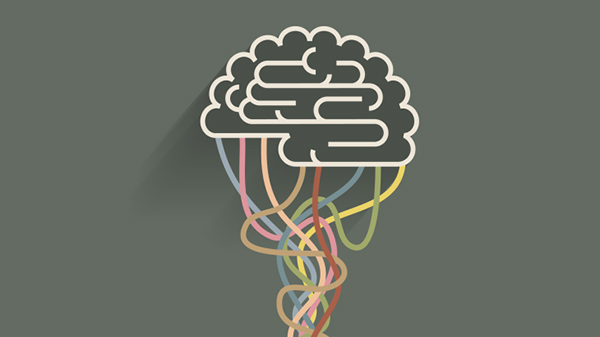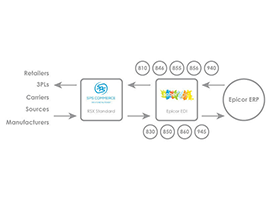One of the most significant changes of the digital era is the growing use of AI in almost every aspect of business
ERP lies at the heart of most organisations’ business processes and is undergoing a radical transformation to meet the demands of digital business. The postmodern ERP era creates a stable, agile core that supports differentiated processes to deliver business outcomes.
One of the most significant changes of the digital era is the growing use of artificial intelligence (AI) in almost every aspect of business. Its insatiable demand for data — coupled with the need for flexibility and agility in processes, architectures and people — presents challenges for the adoption of postmodern ERP strategies.

AI is beginning to change the very nature of ERP itself. We’re already seeing evidence of a fourth era of ERP emerging, one that focuses strongly on data and information rather than processes and people.
Even in the current postmodern ERP era, however, there’s increasing interest in core AI technologies. Chatbots and virtual assistants are starting to be used to drive greater process efficiency and effectiveness. The use of automation via bots, sensors and analytics is reshaping how we work to allow people to perform more value-adding activities. AI tools are also enabling us to derive better performance from our assets.
Gartner predicts that AI will be one of the key determinants of how postmodern ERP deployments deliver value and competitive advantage to the business by 2021.
ERP lies at the heart of most organisations’ business processes and is undergoing a radical transformation to meet the demands of digital business. The postmodern ERP era creates a stable, agile core that supports differentiated processes to deliver business outcomes.
One of the most significant changes of the digital era is the growing use of artificial intelligence (AI) in almost every aspect of business. Its insatiable demand for data — coupled with the need for flexibility and agility in processes, architectures and people — presents challenges for the adoption of postmodern ERP strategies.
AI is beginning to change the very nature of ERP itself. We’re already seeing evidence of a fourth era of ERP emerging, one that focuses strongly on data and information rather than processes and people.
Even in the current postmodern ERP era, however, there’s increasing interest in core AI technologies. Chatbots and virtual assistants are starting to be used to drive greater process efficiency and effectiveness. The use of automation via bots, sensors and analytics is reshaping how we work to allow people to perform more value-adding activities. AI tools are also enabling us to derive better performance from our assets.
Gartner predicts that AI will be one of the key determinants of how postmodern ERP deployments deliver value and competitive advantage to the business by 2021.
1. Bots, chatbots and virtual assistants
Chatbots and VAs are currently most useful in postmodern ERP strategies for casual users who find the user experience (UX) daunting and need a self-service experience that’s easier to use. Common deployments include recruiting and HR service delivery operations; benefits management; and supporting time and attendance, expense reporting and calendaring functions.
2. Conversational AI platforms
As postmodern ERP strategies usher in increasingly diverse applications to support them, conversational AI platforms fill a vital role in smoothing the UX for all involved. Organisations can create responsive and engaging UXs relatively quickly. Users are liberated from having to learn additional user interfaces because voice-driven conversational AI takes on the responsibility for learning what the user wants.
3. Analytics
Sophisticated, AI-driven analytics are increasingly becoming embedded within ERP, financial planning and analysis, and financial close applications, to support automation and human decision making. They’re providing more real-time descriptive, diagnostic, predictive and prescriptive analytics.
4. Smart objects, sensors and environments
A broad range of technologies – robotics, smart buildings and intelligence integrated with Internet of Things (IoT) applications – have the potential to significantly disrupt traditional ways of working in inventory and warehouse management, enterprise asset management, facilities maintenance, logistics and production capabilities.
5. Human capital management
Human capital management (HCM) technologies support enterprise efforts to recruit, deploy, develop and manage talent. The principal applications of AI across HCM domains are in recruiting, skills and jobs taxonomies, sentiment analysis and theme detection, recommendation engines and chatbots.
6. Finance
Initial AI applications in postmodern ERP finance will occur during the next two to three years, in three areas – improving usability and providing general process support through the use of bots, chatbots and virtual assistants; improving and automating complex non-routine processes; and augmenting planning and financial forecasting. AI allows these efforts to leverage complex and diverse internal and external datasets in real-time.
7. Procurement
AI is delivered as a feature of a digital application in procurement – for automated inbound invoice processing; spend analysis; or contract analytics. One of the key applications is improving the end-user experience and guiding them to buy preferred products. The tools intelligently identify and deliver appropriate spend policies based on the stage of the procurement journey, complexity of procurement and history.



